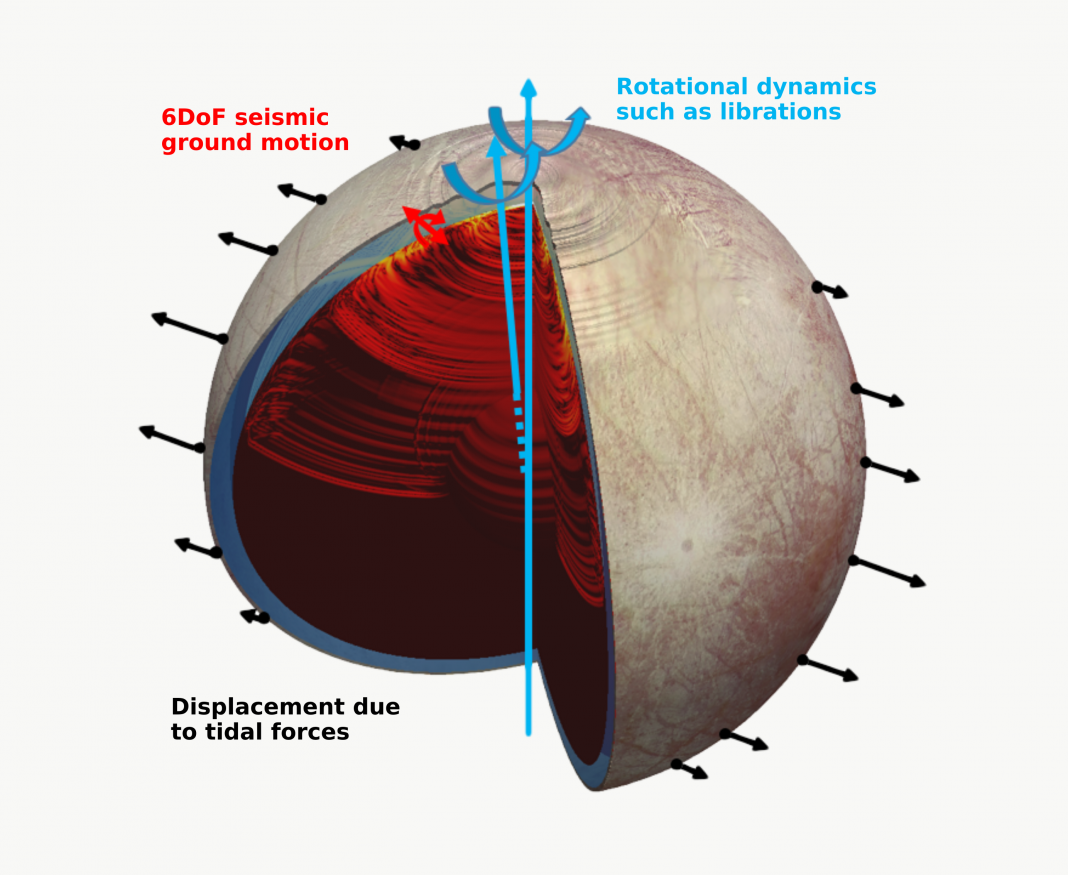PIONEERS European project develops the next generation of instruments that will reveal planetary interiors, explains Professor Raphael F. Garcia from ISAE-SUPAERO
After decades of exploration of planetary surfaces, our knowledge of planetary interiors and internal structures remains very limited. However, the structure of a planetary body tells us a lot about how it formed and evolved during the last 4.5 billion years. It is critical to understand our solar system to know better the thousands of planets orbiting other stars in our galaxy.
Are these planets water-rich? for how long? Can these sustain life? Even at the scale of our solar system these questions are not fully solved because the clues to their answers are hidden deep inside our nearby planets, their moons, and asteroid bodies. Even if all these objects formed from the same materials that formed our Sun, the hazard of accretion generated very different objects evolving differently.
Exploring the internal dynamics of the planetary engine
These differences are driven by their size and by the internal dynamics of the planetary engine, which rejects heat from the planetary interior. The comparison between Earth and Venus is a striking example. These two planets are at a similar distance to the Sun and have about the same size, but the absence of plate tectonics on Venus is a key driver to explain the lack of water and the current harsh conditions at Venus’s surface (450°C and 90 bars).
In addition, some moons of the giant planets in our solar system (Europa, Ganymede) are suspected to hide water oceans below their icy surface. Thus, offering an opportunity for current extra-terrestrial life in our neighbourhood. However, the depth and thickness of these liquid water layers, as well as their interaction with the rocky part of the moon, remain poorly constrained.
Another good reason to improve our knowledge of planetary interiors is to protect our own planet from asteroid impacts. These events are quite rare, but they are a danger for the whole of mankind. In order to deflect asteroids from Earth’s trajectory, one must know how they are made inside.
Use seismic waves, planetary rotations, and deformations
As already demonstrated for the Earth, the Moon and more recently Mars, seismology and geodesy are the main tools that scientists have in hand to image the planetary interiors. The seismic waves are the only waves capable to propagate through the deep interior of a planet, thus allowing an ultrasound of the planetary baby inside its crust.
In addition, in the same manner that hard and raw eggs rotated on a table do not stop their rotation at the same time, the rotations of a planet depend on its internal structure. These geodetic methods, including how the planet deforms under the tidal forces of the Sun and nearby bodies, allow estimating the size of its fluid core and its rigidity which is linked to its internal temperature.
The NASA discovery mission InSight demonstrated recently that the internal structure of Mars can be probed down to its core with a single seismometer, SEIS, which was developed mainly by European teams. In addition, the precise monitoring of Mars rotations by the RISE instrument on the same mission confirmed the planetary anatomy deduced from seismic waves.
These results open a new era for space exploration focusing on the determination of the internal structure of planetary bodies.
Innovate to improve instrument performances in the H2020 SPACE project
Ideally, scientists would need an instrument able to monitor both seismic waves and the rotation of planetary objects. In addition to gathering both seismology and geodesy in a single instrument, the monitoring of ground rotations also allows us to correct ground tilt effects on seismometers and to better understand quakes and the internal structure of planets.
Such instruments are currently developed in the framework of PIONEERS H2020-SPACE project. Relative to usual seismometers, the project is not only innovating by adding rotation sensing – through Fiber Optics Gyroscopes (FOG) – but also by testing and developing new sensing technologies using MEMS accelerometers and optical interferometers for monitoring ground translations.
By the end of the year 2023, the project will produce one high TRL compact instrument for asteroids and one high- performance prototype for the Moon.
The compact instrument will target lander rebounds, active seismic experiments and whole-body rotation monitoring to probe the internal structure of asteroids. It is using FOG and MEMS sensors developed by exail (formely iXblue) company, integrated into an instrument capable of internal storage, autonomous event detection and onboard data processing.
The high-performance prototype will target very small signals generated by quakes, meteor impacts and thermal cracks on the Moon. To observe these signals the instrument will be sensitive to displacements ten times smaller than the size of a hydrogen atom for vibrations at 1 Hz frequency. It is using a newly developed optical interferometer coupled to a mechanical oscillator for translation sensing, and FOG sensors of a diameter larger than 50 cm for rotation sensing.
Adapting the instruments to a space environment
The main challenge faced by the project is to maintain the operations and performances of the instruments despite the large vibrations and shocks during launch and landing, the large temperature variations expected on the surface of airless bodies and the harsh radiations expected in a space environment.
Overall, this project is willing to maintain the leadership of European teams in planetary seismology and geodesy, and to favor the development of new instruments for Earth’s seismology, as well as new applications for planetary instruments. But the ultimate scientific goal will be to image the internal structure of asteroids and the Moon. The instruments do not have yet a flight mission, but we expect that future space missions in direction of these planetary bodies will cover the imaging of their internal structure by seismology and geodesy.

This work is licensed under Creative Commons Attribution-NonCommercial-NoDerivatives 4.0 International.


